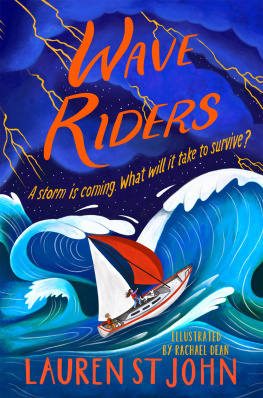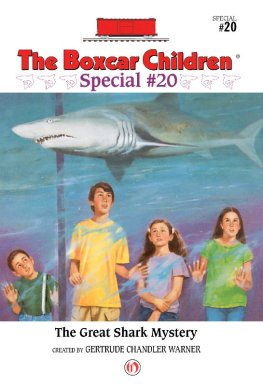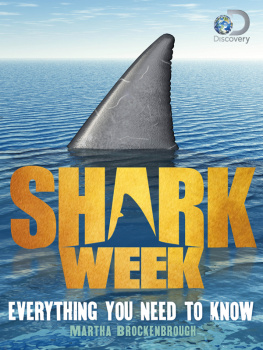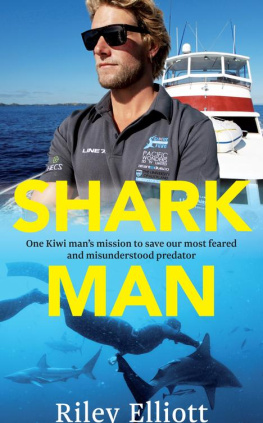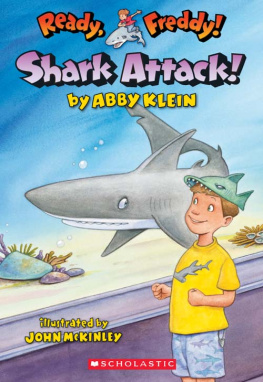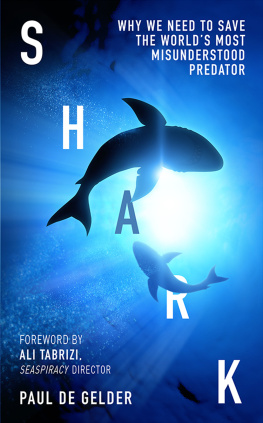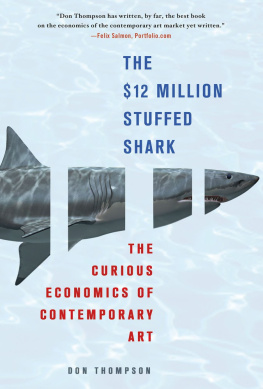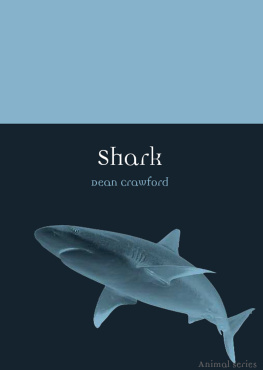SHARK
SHARK
THE BIOGRAPHY
OF GREG NORMAN
LAUREN ST JOHN
RUTLEDGE HILL PRESS
NASHVILLE, TENNESSEE
Copyright 1998 by Lauren St John
All rights reserved.Written permission must be secured from the publisher to use or reproduce any part of this book, except for brief quotations in critical reviews and articles.
Published in Nashville, Tennessee, by Rutledge Hill Press 211 Seventh Avenue North, Nashville, Tennessee 37219.
Typography by E. T. Lowe Publishing Company, Nashville, Tennessee. Cover photo by Phil Sheldon.
Library of Congress Cataloging-in-Publication Data
St John, Lauren, 1966
Seve / Lauren St John.
p. cm.
Includes index.
ISBN
00-0000
CLIP
Printed in the United States of America
1 2 3 4 5 6 7 8 902 01 00 99 98
I hate failure. The idea of failure is, I think, my driving force.
Greg Norman, November 1989
For J,
Who makes everything possible
CONTENTS
T he success and authenticity of almost any biography of a living person depends largely on the cooperation of the people who have shaped and influenced him. For that reason, I am indebted to Greg and Laura Norman, who not only gave generously of their time but were much kinder and nicer than they actually needed to be while doing so. Also to Frank Williams, who is that rarity in professional sporta manager who returns phone callsand who went above and beyond the call of duty in attempting to ensure that this book depicted Greg fairly and as a whole human beingwith all the charms and flaws that that implies.
I am enormously grateful to Merv and Toini Norman, to James and Lois Marshall (thanks for the kindness, the lift to the station, and the chocolate biscuits), to Hughes Norton, Tom Ramsey, Bill Longmuir, Nick Price, Bruce Edwards, Butch Harmon, David Leadbetter, Charlie Earp, Robinson Holloway, Tom Callahan, and Bart Collins.
Thanks to everyone at Transworld, especially my editor Adam Sisman, Shona Martin, Hazel Orme, Sheila Corr, Shawna Newman, and Katrina Whone. Also to Debbie Beckerman, for persuading me to do the book, to Rhod McEwan, the best bookseller in the world, and to my agents, Lyn Tranter in Australia and Sara Menguc and Georgia Glover at David Higham, for keeping faith in me.
Anyone who has been through the nightmare that is writing books knows that it is not only the author who feels the strain. Thanks to my Nashville family, Jack Daniels, Steve and Kim Byam, Jan, Steffi, Debra, Anabel, and Mike and Jan Blaustone, my London support group, Jane and Chris, Liz and Joan, and my friends in the AGW, especially Peter Higgs and Derek Lawrenson. Lastly and most importantly, thanks to Ken Johnson, my mom, dad, sister Lisa, and my cats Felix and Mommy-Cat, who weather the storms, cope with the crises, and, hopefully, share in the good bits.
Power is what it is all about and no one likes relinquishing that.
Mark McCormack, Golf World, 1988
G reg Norman had taken New York. Eyes narrowed, black hat pulled down low, he stared down the tramps, Trumps, and shoeshine boys of Gotham from a king-sized neon billboard on Times Square. I had completely forgotten all about it, Norman told Golf World magazine. Then the limo driver told me to look up, and there it was. It was a lot bigger than I expected. It looked like a football field up there.
Norman was everywhere in 1995. His ice-blue eyes and Lone Ranger stance were plastered on subway stations in Brooklyn and buses rolling down Broadway. He was a sepia-toned success story on the cover of MensJournal and the PGA Player of the Year. He put his adventure hat on for Chevrolet in America and Holden in Australia. He urged people to write with Le Boeuf pens, use Cobra clubs, consider Maxfli balls, play eighteen holes at the Medalist, buy Norman turf, sail Norman yachts, fly Qantas, wear a Rolex, and Attack Life in Greg Norman clothes.
Two years earlier in a villa on the other side of America, the cornerstones of this success storyInternational Management Group and the man they once marketedhad collided. Then nobody was smiling. Norman, his chiseled face intent, was talking to his agent, Hughes Norton. Normans elegantly beautiful wife, Laura, sat beside him.They were discussing the successful outcome of the biggest gamble of a career founded on risk. In 1990, Norman had invested two million dollars of his own money in Cobra Golf, Inc., acquiring a 12 percent stake in the company. Even before the primary shares were offered in September 1993, it was clear that Normans stake was worth almost twenty million dollars. By January 1, 1996, it would be worth nearly forty-four million dollars.
In the meantime Norman had left IMG and the small matter of a commission had arisen. Earlier, they had reached a stalemate, but now Norton believed he had a temporary solution in mind, a destination for the million dollars in question, a safe house, as it were, on the way to IMG.
Greg, he said slowly, youre wrong not to pay IMG. But if you cant bring yourself to pay it to them, why dont you pay it to me?
THE MILKY BAR KID
The guys who want to be great players learn, from the age of fifteen, that if youre not willing to totally fall on your face with the whole world watching, and deal with it, and stay up, then you dont become a champion.
Dr. Bob Rotella, sports psychologist, 1996
W hen Toini Norman played her last round of golf, the bougainvillea were in bloom, crowding the tees with their scarlet and purple blossoms as she walked wistfully from the eighteenth, her pregnant belly heavy and awkward. She had managed to keep playing for more than seven months, holing out weekly amid the ghost gums and sand greens of Mount Isa, but when the summer came with scorching metallic skies, she was forced to admit defeat. On February 9, 1955, she was admitted to the hospital with high blood pressure. Gregory John Norman was born the next day, arriving in the world with fine milky hair and a piercing scream. He weighed eight pounds, eleven ounces.
He was a terrible baby, Toini laughs. He cried all the time. He kept us awake for about twelve months. Finally, we moved into a new house and I said to the neighbors, I hope you arent light sleepers because Im going to just leave him to cry. Greg cried for two whole nights, and then he never cried again.
Both Toini and her husband, Mervyn, were of Nordic ancestry. Toinis carpenter father, Seth, and her mother, Tyyne Hovi, were Finns who migrated to Australia in the thirties, while Mervs heritage was Norwegian, Danish, German, and English. They met and fell in love on the tennis court; and when Greg was born,Merv was working as an electrician for Mount Isa Mines in Northwest Queensland, a noisy jumble of slagheaps and shuddering pipelines. The largest city in the world in terms of surface area, Mount Isa sprawled over rich deposits of zinc, silver, lead, and copper. As the only place of consequence for seven hundred kilometers in any direction, reports the Rough Guide to Australia, the smokestacks, concrete paving, and sterile hills at Mount Isa assume oasis-like qualities on arrival, despite being undeniably ugly.
Perhaps fortunately, the Normans moved away when Greg and his older sister, Janis, were still tiny, taking up residence in Townsville, an arid and muggy but altogether more convivial spot near the translucent waters of the Great Barrier Reef. Merv set up his own engineering practice, and Toini played golf again and tried to cope with Greg and Janis. Both my children were little horrors, she says.
Her son was barely six when he discovered the joys of Magnetic Island, a vividly beautiful granite triangle just off the coast. The Normans had a small holiday house among the palms there, and Greg and Janis spent every spare hour of their childhood skin diving and spearfishing among the coral reefs, roasting their catches over an open fire. Thats all I did,Norman says, if I wasnt playing football or cricket or rugby or Australian Rules. I definitely wasnt studying, thats for sure.
Next page

